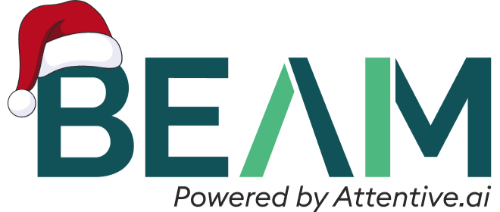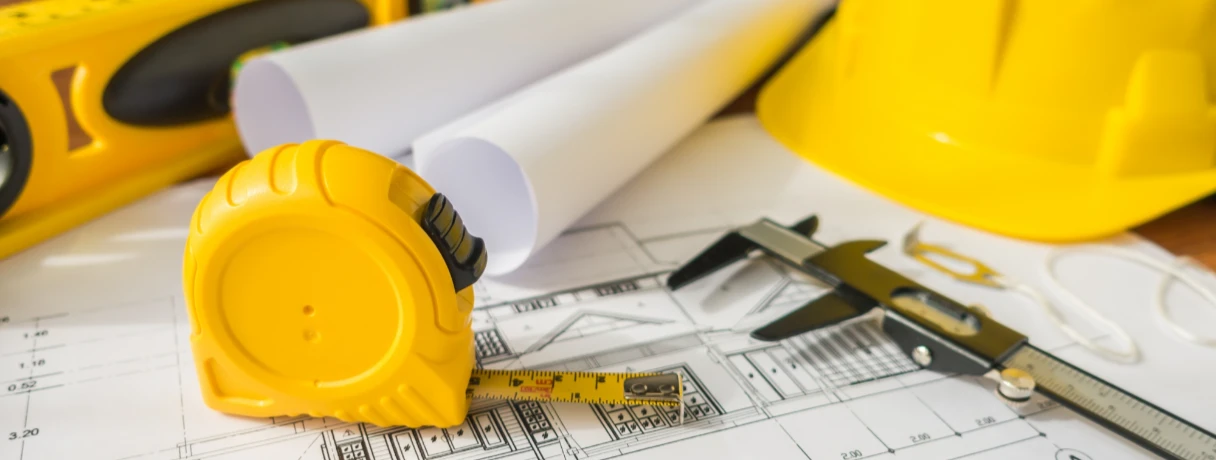Understanding the Core Impact: Tariffs and Construction Cost Inflation
You might be wondering - how do tariffs really affect construction costs?
In simple terms, tariffs are government-imposed taxes on imported goods. When applied to construction materials, they immediately ripple through project budgets, supplier contracts, and bid estimates.
Key Financial Impacts:
- Construction Input Prices Soar: Between 2020 and 2024, construction input prices have jumped; with a 2.6% year-over-year rise in July 2025 alone-the largest 12-month gain since February 2023-driven largely by tariffs on aluminum, steel, and copper.
- Tariffs Boost Builder Costs: Building material costs have surged 34% since December 2020, outpacing inflation. Tariffs on imported steel and aluminum alone have added roughly $10,900 to the cost of constructing a typical new home.
- Project Budgets Escalate: Recent tariff actions are not just numbers on paper-builders report that the average cost impact per home is about $10,900, making projects more expensive and challenging to budget.
- Consumers Feel the Pinch: These rising input costs are eventually passed along, with the average new home price increasing by an estimated $20,000–$30,000, making affordability a growing concern for buyers.
Why It Matters
Tariffs don’t just affect importers-they impact every stakeholder downstream, from fabricators to subcontractors and end consumers. A single policy change can raise the cost of rebar, conduit, or sheet metal across multiple projects.
In summary: Tariffs create an inflationary chain reaction, affecting raw materials, bidding competitiveness, and project feasibility.
Key Materials Feeling the Tariff Squeeze
Tariffs don’t hit all materials equally. Some, like steel and aluminum, are directly taxed, while others-like lumber or electrical components-see secondary inflation from supply chain tightening.
1. Steel and Aluminium
- Tariff rate: 25% (steel), 10% (aluminum) under Section 232.
- Impact: Structural steel, rebar, ductwork, and aluminum framing now account for higher portions of total project cost.
2. Lumber and Wood Products
- Lumber has faced countervailing duties on Canadian imports, often fluctuating between 12–17%.
3. Copper and Electrical Components
- The U.S. Producer Price Index for Copper Wire & Cable shows a 13.80% increase over the past year.
- Effective August 1, a new presidential proclamation imposes universal 50% tariffs on imported semi-finished copper products-like pipes, wires, rods, and sheets-as well as copper-intensive electrical components such as cables, connectors, and fittings.
4. Gypsum, Cement, and Aggregates
- While not directly tariffed, freight and fuel-related import restrictions have driven cost inflation in drywall and concrete materials.
- Contractors on forums frequently discuss extended wait times for cement and gypsum boards-sometimes 6–8 weeks longer than pre-tariff norms.
In summary: Steel, lumber, and copper are the “big three” to monitor, but ripple effects are visible across nearly every input category.
Beyond Materials: Broader Financial & Operational Ramifications
Tariffs aren’t just inflating material prices-they’re disrupting entire project lifecycles. From delayed imports to budget overruns and strained contracts, every stakeholder in construction is feeling the ripple effects. The key effects can be observed as:
1. Supply Chain Disruptions
Port congestion and rerouting due to trade restrictions increase lead times. Many GCs now face 12–20 week waits for imported fittings, aluminum extrusions, or specialty electrical equipment.
As many estimators note, even local suppliers are quoting longer delivery windows due to upstream uncertainty.
2. Inflationary Pressures and Project Delays
When key materials cost 15–30% more, budgets balloon. Developers either pause projects, reduce scope, or renegotiate financing terms.
3. Contractual Conflicts
Without escalation clauses, contractors risk eroding profit margins. Subs locked into fixed bids often absorb material hikes directly-leading to strained relationships and financial instability.
Summary point: The impact of tariffs on construction costs extends far beyond purchasing-it reshapes project timelines, bidding strategies, and risk management frameworks.
Navigating the Challenges: Mitigation Strategies for Contractors
Let’s get practical: How can GCs manage these costs before they erode profitability?
1. Contractual Safeguards and Price Escalation Clauses
The first defense is in your contracts! Industry-standard documents like ConsensusDocs 200.1 and AIA A201-2017 provide standardized contract language for construction projects, including clauses on price escalation, risk allocation, and scope changes, helping GCs and subs manage costs and legal obligations consistently. They allow for equitable adjustment when material costs surge beyond expected thresholds.
In today’s volatile market, AI-based takeoff software empowers GCs to accurately quantify material requirements in 24-72 hours rather than weeks, eliminating the guesswork in cost forecasting. By delivering precise material counts for steel, copper, and other high-risk items, these platforms reduce manual errors, free up estimator time, and allow contractors to take on more bids simultaneously. As a result, GCs can make confident decisions, protect margins, and sail through even tough tariff-driven cost fluctuations with profitability intact.
Tips for GCs and Subs:
- Include clear price escalation clauses tied to indexes like the ENR Construction Cost Index or Producer Price Index (PPI), which track changes in construction material and labor costs over time.
- Document supplier quotes and timestamps to support claims.
- Negotiate cost-sharing terms with owners to prevent total burden on one party.
Summary: A well-drafted contract clause can mean the difference between a sustainable margin and a financial hit.
2. Supply Chain Optimization and Supplier Relationships
With AI-based takeoffs, GCs gain a clear, data-backed picture of material requirements from project drawings, enabling smarter procurement planning and timely supplier negotiations. This allows the ability to lock in bulk pricing or alternative sources ahead of price spikes.
Besides, strong supplier relationships are a definite competitive edge for GCs today: AI-based takeoffs save hours of manual material quantification, freeing up time for contractors to focus on supplier negotiations, collaboration, and building long-term trust.
Strategies:
- Diversify suppliers: Source both domestic and international options to minimize tariff exposure.
- Negotiate long-term contracts: Lock in bulk pricing before the next tariff revision.
- Use digital procurement tools: AI-driven platforms can forecast material trends and alert teams to cost surges early.
Example: Contractors using predictive procurement software reduced exposure to steel price swings by up to 12% during 2023 (AGC report).
Summary: Flexibility and data-driven purchasing help absorb volatility from trade policy shocks.
3. Financial Planning and Project Bidding Adjustments
AI-based takeoffs directly enhance bidding accuracy by providing exact material quantities, enabling GCs to incorporate realistic cost buffers for tariff-sensitive items. Estimators save hours of manual calculations, allowing teams to prepare multiple competitive bids quickly. The precision and speed offered by AI translate into stronger bid proposals, improved win rates, and the ability to maintain profitability even when material costs fluctuate unexpectedly.
Keith Wright, Vice President of JBW Installations Inc. shared that significant material waste due to manual takeoff errors cost them extra labor, fuel, and transportation thereby reducing their margins. With Beam AI’s accurate material takeoffs, they could ship just as much material as required to the sites. It eliminated the fuel and transportation costs, reduced labor costs, and also helped JBW tap 1.7X revenue increase in just one year. Read their story here.
At the same time, adjusting bids to reflect realistic cost expectations is critical, let’s see how to do it:
- Build material cost buffers (typically 5–10%) into proposals.
- Review historical cost indices to justify estimates with clients.
- Maintain contingency reserves for high-risk materials like steel and copper.
- Communicate transparently with owners about tariff exposure.
Summary: Smart bidding keeps projects profitable even under unpredictable market conditions.
The Policy Landscape and Future Outlook for Construction Tariffs
The construction industry operates in a volatile policy environment, where trade decisions can change overnight.
1. Current Policy Context
- Section 232 tariffs remain active for steel/aluminum imports from China, Russia, and others.
- The U.S.–The EU trade agreement offers partial relief through quota-based exemptions, but uncertainty persists.
- Political shifts could reintroduce or extend tariffs depending on election outcomes and trade negotiations.
2. Economic Forecasts
- The Brookings Institution projects moderate material cost increases (3–6%) through 2025 if current tariffs remain.
- BLS PPI data suggests stabilization in lumber and steel prices but continued volatility in electrical components.
Summary: While we can expect gradual normalization, GCs should plan as if tariffs and delays are the “new normal” for 2025.
Staying Informed: Key Resources and Forecasts
To make data-backed decisions, contractors should track:
- AGC Construction Inflation Alert – Quarterly insights on material trends.
- BLS Producer Price Index (PPI) – Monthly cost fluctuation updates.
- Brookings and Deloitte reports – Economic forecasts on trade and construction.
Summary: Staying informed is as critical as managing bids-data enables agility.
Final Word
Tariffs have become a defining variable in construction economics. For GCs and subs, the best defense lies in proactive financial planning, strong supplier networks, and contract clauses that balance risk. While policy changes may bring some relief, the ability to adapt through data, foresight, and collaboration will determine who thrives in this new construction cost landscape.









.webp)




.webp)

